Link to the Video: https://youtu.be/kGCxa5sD-4A
Disappearing City: Tong Lau
Introduction:
Hong Kong is a vibrant and glamorous cosmopolitan city that gives people an impression of modern skyscrapers and busy commercial districts. Tong lau, the architectural style of Hong Kong from the mid-to-late 19th century to the 1970, represent an era and are a symbol that represents the development of Hong Kong’s aesthetics and Hong Kong’s history. But with the development of the times, Hong Kong’s Tong lau, as witnesses of history and symbols of culture, are gradually being overshadowed by the fate of demolition.
Tong lau in Hong Kong are divided into four periods. The design of Tong lau in different periods is subject to changes in government policies, and the materials used in their construction are also changed as time progresses.
One of the main reasons leading to the demolition of Tong lau is the ageing and structural unsafety of the buildings. Some Tong lau have undergone years of use and ageing, and its building structure has safety hazards and fails to meet modern building standards. For safety reasons, the Government will decide to demolish these Tong lau. In addition, another reason is that land resources in Hong Kong are too scarce. In order to cope with the development needs of the city, old Tong lau need to be demolished to make way for the construction of more modern and efficient buildings.
The video will tell the viewer about the development and disappearance of the Tong lau by showing the surroundings of it, and four Tong laus built in different periods.
Methods and techniques:
My video will show the audience the history of Tong lau in Hong Kong and the problems that exist now. My research methods are mainly fieldwork, literature review and online questionnaire survey. Firstly, I conducted fieldwork in the vicinity of Tong lau in different districts of Hong Kong. After gaining an understanding of the current situation of Tong lau and their surroundings, I reviewed relevant historical documents and architectural archives on the Internet to learn more about the history of Hong Kong’s Tong lau, their cultural value, as well as the reasons for and the process of their demolition. Then I interviewed 21 participants through an online questionnaire survey about the reasons for the disappearance of Tong lau and whether they supported their demolition. Seven of them believed that Tong lau were demolished because of urban development and regeneration, eight believed that it was due to the ageing of the buildings and structural insecurity, four believed that it was due to economic interests and commercial development, while two believed that there were other reasons. Surprisingly, the vast majority of people were in favour of the Tong lau’s demolition (17 people). After gathering information through these methods, I went to the Tong lau on Shanghai Street to shoot video footage, in addition to obtaining photographs or videos of four existing Tong laus built in four periods: 120 Wellington Street, 313-315 Shanghai Street, 176-178 Shanghai Street, and the Tong lau complex on Wing Lee Street.
At the very beginning of the video, I show the bustle of Hong Kong and the passage of time by speeding up a video shot on Shanghai Street.

I then make the viewer feel as if they are there by using a first person view of tourists travelling through the streets of Tong lau.
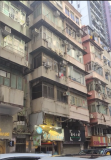
When I was working on the titles of the four different periods, in order to give the viewers a sense of the changing times, I added a colour bar to each interface, which shifted from black to white as the times changed.
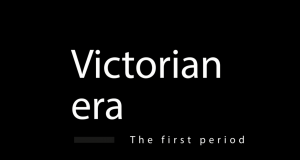
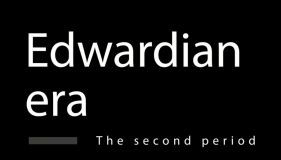
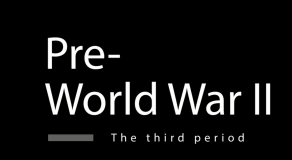
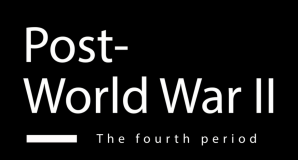
While I was photographing a specific Tong lau, I photographed it in distant, close up and close-up. The distant view shows its surroundings in its entirety, while the close up view highlights the features of the Tong lau. The close-ups of time for the building was constructed are to avoid the viewer not noticing this feature.
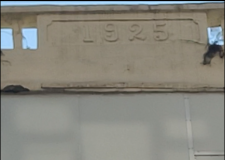

In addition, I have expressed the structural deterioration of some of the Tong lau through photography of some of them.

At the end of the video, I show the changes Hong Kong has gone through in modern times – the disappearance of Tong lau and the erection of high-rise buildings – by overlapping Tong lau and high-rise buildings in Hong Kong.
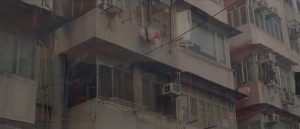
Bibliography
Chu, Cecilia (2012). “Between Typologies and Representation: The Tong Lau and the Discourse of the “Chinese House” in Colonial Hong Kong”.
Dewolf, C. (2020, October 15). Hong Kong’s Colonial Heritage, Part VIII: Shanghai Street Shophouses. Zolima City Magazine. https://zolimacitymag.com/hong-kongs-colonial-heritage-shanghai-street-shophouses/
Ghafoor, A. (2019, September 2). The “Disappearing” buildings in Hong Kong (VI) — 92-year-old Chinese tenement stays sturdy after truck crash. Spacious. https://www.spacious.hk/en/blog/the-disappearing-buildings-in-hong-kong-vi-92-year-old-chinese-tenement-stays-sturdy-after-truck-crash?amp=1
Ke, Y.J et al. (2014)“An Environmental Study on the Collapse of a Tenement Building in HK.” Advanced Materials Research. Vol. 838–841. Trans Tech Publications Ltd, 2208–2211.
Long, Bingyi, Chi-ching Ho, and Ho Yin Lee. (2003).Tong Lau : A Compilation of Measured Drawings of Tenement Buildings in Urban Areas of Hong Kong = 唐樓. Hong Kong: Department of Architecture, The University of Hong Kong.
Tsang, Xiang Han Vincent, and Jingxiang Zhu. (2018) When Light Meets Heavy : A Feasibility Study on Using Lightweight Construction to Revitalise a Historic Tenement Building in Kowloon, Hong Kong.
Wong Wah Sang (2014). “Architectural Phenomena Following Law—Review of Residential Buildings in Hong Kong’s Colonial Era” . Journal of Civil Engineering and Architectural Research. 1 (4): 215–229.
Wu, Min. (2011) Condensation and Rusting : An Investigation of a Tenement Building in Hong Kong. 1st ed. Hong Kong: Hong Kong Polytechnic University.
Xue, Charlie Q.L. (2016). Hong Kong Architecture 1945-2015: From Colonial to Global. Springer. p. 99.
香港唐楼的前世今生 | 香港旅游发展局. (n.d.). Discover Hong Kong. https://www.discoverhongkong.cn/china/explore/culture/the-heritage-house-revival.html
正在消失的香港唐楼|界面新闻 · 影像. (n.d.). https://www.jiemian.com/article/2273641.html
林可欣. (2017, May 28). 【永和號.多圖】歷史網公開中環80年老店舊相:留下時代印記. 香港01. https://www.hk01.com/%E7%A4%BE%E5%8D%80%E5%B0%88%E9%A1%8C/93071/%E6%B0%B8%E5%92%8C%E8%99%9F-%E5%A4%9A%E5%9C%96-%E6%AD%B7%E5%8F%B2%E7%B6%B2%E5%85%AC%E9%96%8B%E4%B8%AD%E7%92%B080%E5%B9%B4%E8%80%81%E5%BA%97%E8%88%8A%E7%9B%B8-%E7%95%99%E4%B8%8B%E6%99%82%E4%BB%A3%E5%8D%B0%E8%A8%98
Liu Chang
3035952197
Your video essay is very fantastic. The content provides a comprehensive overview of the topic of Tong Lau in Hong Kong, covering the historical significance, architectural styles, and the current challenges facing these historic buildings. You has done a thorough job of gathering information from various sources, including fieldwork, literature review, and online surveys.In terms of Visual Design, the video’s visual elements are strong, with the use of time-lapse photography to convey the bustling nature of Hong Kong’s streets and the incorporation of color bars to differentiate the various Tong Lau periods. I love this video.
Jin Yawen 3035945728
Chang, I think you made a great work. Your video project offers a comprehensive and engaging exploration of the history and current issues surrounding Tong Lau in Hong Kong. The combination of fieldwork, literature review, and online surveys demonstrates a thorough and multifaceted research approach. By conducting fieldwork in various districts, you’ve gained valuable first-hand insights into the current state of Tong lau and their surroundings. The inclusion of historical documents and architectural archives enriches your narrative with a deep understanding of the cultural and historical significance of these structures. This blend of methodologies not only highlights the complexities of urban development and preservation but also ensures that your video will be both informative and thought-provoking. Your attention to detail, from the specific locations on Shanghai Street to the various periods of Tong Lau construction, promises a well-rounded and visually compelling work.
Linyong Xia (3035951923)
Hi Liu! Your video essay provides a compelling narrative on the significance and decline of Hong Kong’s Tong lau architecture. The introduction effectively sets the stage by contrasting the city’s modern image with its historical roots. Your structured overview of Tong lau’s evolution across four periods showcases a deep understanding of architectural history and urban policy shifts. The mixed-methods approach, combining fieldwork, literature review, and online surveys, enriches the narrative with diverse perspectives and empirical data. The visual techniques, particularly the first-person view and the transition of color bars, expertly immerse viewers in the historical context and convey the passage of time. Additionally, your focus on structural deterioration and urban redevelopment highlights critical socio-economic factors influencing Tong lau’s fate. Overall, your work not only documents the disappearance of Tong lau but also prompts reflection on cultural preservation amidst urbanization.
Zhang Xinyi 3036094813
Hello Chang, very fine video!
Starting from the Victorian period, the development of the tenement was recorded through a historical timeline, and the soothing music and realistic images seemed to give me a sense of the past and present of the tenement. At the end of the video, a questionnaire on the reasons for the disappearance of tenements and whether or not they support their demolition is given, showing the viewer the current state of the tenements, which is very suitable for the theme of “Disappearing City”.
Particularly, the visual design of the video is of high professionalism and innovation. The uniqueness of the tenement buildings is skillfully demonstrated through different shooting angles – distant, close-up and close-up. The change of color bars subtly symbolizes the flow of time, while the overlapping images of tenement buildings and tall buildings strongly express the contrast between tradition and modernity.
Once again, my compliments, I learned a lot from your video and essay!